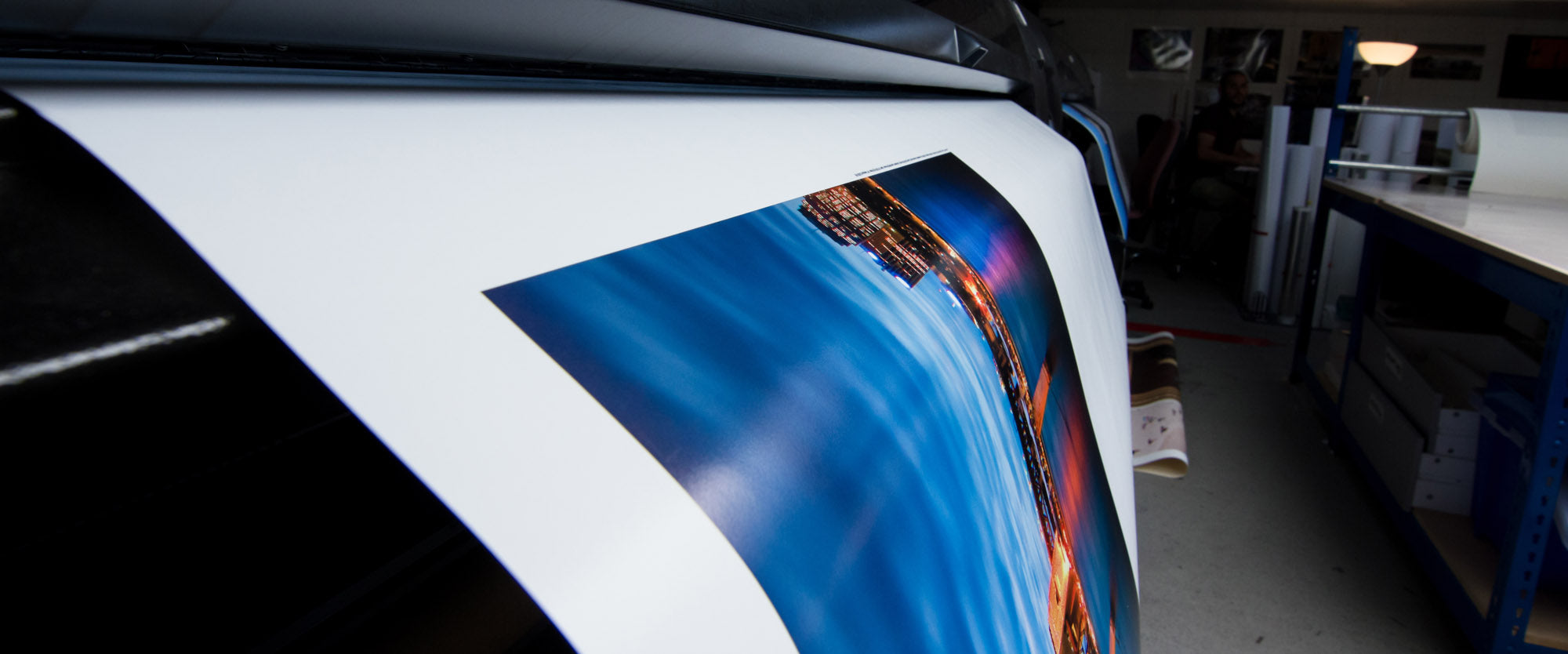Here's an overview:
- Introduction to File Formats and Printing Quality
- Understanding the Basics: Pixels vs. Vectors
- The Big Three: TIFF, JPEG, and PNG Explained
- When to Use PDF for Printing
- Pros and Cons of RAW Formats for Print
- The Role of Resolution in Printing
- Colour Management and File Formats
- Compression Techniques and Print Quality
- File Format Compatibility with Printers and Software
- Preparing Your Files: Tips for Optimal Print Quality
- Advanced File Formats for Professional Printing
- Saving Your Work: Best Practices for Print-Ready Files
- Conclusion: Making the Best Choice for Your Printing Needs
Introduction to File Formats and Printing Quality
Choosing the right file format is crucial when preparing a document or image for printing to ensure the final output meets expected quality standards. Various file formats serve different purposes and can dramatically affect the clarity, colour fidelity, and detail of printed materials. Understanding the strengths and limitations of each format is key to achieving the best results.
Digital Concepts Underpinning File Formats
- Raster vs. Vector: Raster images are made up of pixels and are resolution-dependent, which can lead to quality loss when scaled. Vector images, in contrast, use mathematical equations to ensure scalability without compromising on quality.
- Compression: Many file formats use compression to reduce file size, which can be lossy, irreversibly degrading image quality, or lossless, preserving quality while still reducing file size.
- Color Models: File formats differ in how they handle colours, with some tailored for the RGB colour model used by monitors and others designed for the CMYK model utilized in full-color printing.
Key File Formats for Printing
- TIFF: A flexible raster file format that supports lossless compression, making it ideal for high-quality printing but resulting in larger file sizes.
- JPEG: Popular for photographs due to its high compression rates, yet it can exhibit quality loss, visible as artifacts, which is detrimental for professional printing.
- PDF: Often the preferred choice for a range of printing needs, as it can encapsulate both vector and raster graphics, text, and maintains formatting consistently across different systems.
- EPS: A vector format that is excellent for logos and graphics that require scaling, but is less suitable for complex, colour-dense images.
- PNG: Provides lossless compression and supports transparency but is less common in professional printing due to the lack of CMYK support.
Selecting the optimal file format requires a balanced consideration of the document or image's content, the desired print quality, and the intended use of the printed material. Empowered with an understanding of these key concepts, one can approach printing tasks with confidence, assured that their chosen file format will help deliver the highest quality results.
Understanding the Basics: Pixels vs. Vectors
When choosing the correct file format for printing, one must understand the fundamental difference between pixel-based images and vector graphics. This knowledge informs the decision-making process and ensures the highest quality output.
Pixel-based images, also known as bitmaps or raster graphics, are composed of individual pixels, each holding colour information. Pixels are tiny squares that, when viewed at a standard size, collectively create the appearance of a continuous image. Popular pixel-based file formats include JPEG, PNG, and GIF. The resolution of these images, measured in pixels per inch (PPI), is fixed, which means enlarging the image can lead to a loss of quality. This is known as pixelation, where individual pixels become noticeable, resulting in a grainy or blurry image.
In contrast, vector graphics are made up of paths defined by mathematical expressions, resulting in shapes, lines, and curves that are scalable without any loss of quality. File formats such as SVG, AI, and EPS are vector-based. Unlike pixel-based images, vectors can be enlarged infinitely with no degradation, making them ideal for logos, text, and simple graphics that require scalability.
For optimal printing quality, it is crucial to consider the nature of the content:
- Use vector graphics for designs that need to maintain sharpness regardless of size changes, such as logos or typography.
- Opt for pixel-based images for complex, detailed photographs or artwork without the intention to scale them significantly.
Ultimately, the choice between pixel-based images and vector graphics hinges on the specific needs of the print job, the nature of the artwork involved, and the required scalability and resolution.
The Big Three: TIFF, JPEG, and PNG Explained
When considering file formats for printing, it's crucial to understand the attributes of TIFF, JPEG, and PNG, as these are commonly used and have distinct characteristics that affect print quality.
TIFF (Tagged Image File Format)
- Higher Quality: TIFF is favored by graphic artists and photographers for its ability to retain high quality. It supports layered images and is often used for detailed graphic work.
- Lossless Compression: TIFF offers lossless compression, which means the original image data is preserved perfectly.
- Larger File Size: The downside is a larger file size compared to JPEG and PNG, which can be a concern for storage and transfer.
- Print-Ready: It is the go-to format for printing because it maintains colour fidelity and image detail.
JPEG (Joint Photographic Experts Group)
- Lossy Compression: JPEG uses lossy compression, which sacrifices some details to reduce file size. This can be noticeable in prints with gradations of tone and colour.
- Small File Size: The benefit of JPEG is in its much smaller file sizes, making it ideal for sharing or when space is limited.
- Adjustable Quality Levels: Users can choose the level of compression, which affects the image's quality and file size—a balancing act for print versus digital use.
- Ubiquity: It is the most common format for photos and images on the web and in digital photography, which means it's widely accepted by print services.
PNG (Portable Network Graphics)
- Lossless Compression Like TIFF: PNG also employs lossless compression, ensuring no loss of image data.
- Supports Transparency: One of the biggest advantages of PNG is support for transparency, making it ideal for logos and graphics.
- Web-Friendly: PNG files work well on the internet, particularly for images that require transparency or those that are edited frequently.
- Not Ideal for Professional Printing: While PNG provides high-quality images with transparency, it is not as suitable for high-resolution printing as TIFF due to its colour limitations and compression methods.
Selecting between TIFF, JPEG, and PNG depends on specific printing needs, storage capacities, and whether image quality or file size is the priority.
When to Use PDF for Printing
The Portable Document Format (PDF) is widely regarded as the industry standard for document sharing and printing. This format is particularly appropriate for printing applications due to several key features that ensure consistent output across different devices and platforms.
PDFs are ideal for:
- Complex Layouts: When dealing with documents that contain intricate layouts with a mix of text, images, and vector graphics, PDFs maintain the integrity of the design with precise positioning and formatting that printers can accurately reproduce.
- High-Resolution Graphics: If your document includes high-resolution photos or detailed illustrations, a PDF file will preserve the visual clarity and sharpness, essential for a high-quality print outcome.
- Font Consistency: Printing documents that utilize custom or non-standard fonts can be problematic. However, PDFs embed the fonts used within the document, so there's no risk that a printer without the same font library will substitute or drop fonts, potentially altering the document's appearance.
- Colour Accuracy: For printing materials where exact colour matching is crucial—such as marketing collateral or company branding—PDFs support colour management settings that help in reproducing the intended hues and tones.
- Secure Sharing: When sending a document to a printing service, security may be a concern. PDFs can be password-protected, ensuring that the content cannot be altered before printing.
- Universality: The ubiquity of PDF format means that virtually all professional print shops will accept PDF files, making it a safe choice for ensuring compatibility.
- Ease of Use: Most design software offers the ability to save or export projects as a PDF, simplifying the process from creation to print.
In situations where maintaining design fidelity and print quality is of the utmost importance, a PDF file is often the best choice. It is critical, however, to communicate with the printing service provider to confirm that the PDF settings match their print environment specifications.
Pros and Cons of RAW Formats for Print
When it comes to printing high-quality images, the choice of file format can make a significant difference. RAW formats are often preferred by professional photographers for their flexibility in post-processing, but they also pose some challenges for printing. Here’s an analysis of their pros and cons.
Pros:
- Maximum Quality: RAW files contain the complete data from the camera's sensor, ensuring the highest possible image quality without any loss of information.
- Flexible Editing: Before converting to a print-friendly format, RAW files allow for extensive post-processing adjustments without degrading the image, such as exposure, white balance, and colour toning.
- Extended Dynamic Range: RAW files capture a wider range of light and dark values, providing more detail in shadows and highlights, crucial for prints with depth and realism.
- Precise Colour Management: Working with RAW files allows for precise colour adjustments tailored to the specific printing process and paper type, ensuring accurate and consistent colours.
Cons:
- Large File Sizes: RAW files are significantly larger than compressed formats, which can be problematic for storage and slow down the printing process.
- Compatibility Issues: Not all printers or printing services accept RAW files directly, requiring a conversion to a widely accepted format like TIFF or JPEG.
- Requires Post-Processing: RAW files cannot be printed directly and must be processed and converted to a printable format, necessitating additional software and expertise.
- Slower Workflow: Due to the file sizes and processing requirements, working with RAW files can lead to a slower overall workflow from shooting to final print.
Each of these factors must be weighed while deciding whether RAW is the appropriate format for print projects. While they offer superior control and quality, the additional steps and requirements can be a drawback for some users, particularly those with limited time or processing resources.
The Role of Resolution in Printing
Resolution is a pivotal factor in determining the print quality of images and graphics. It refers to the density of dots per inch (DPI) or pixels per inch (PPI) in a digital image. The higher the resolution, the more detail is visible, resulting in crisper and better-defined prints.
Printers interpret the resolution of an image as a directive for how densely to pack the ink dots. A high-resolution image will instruct the printer to use more dots in a given area, which typically leads to sharper and more finely detailed images. On the other hand, a low-resolution file may print with visible pixelation or blurring, as the printer will not have enough data to fill the space with detail.
Here's how resolution plays out in the printing process:
- Critical Detailing: Text clarity and the visibility of intricate patterns rely heavily on sufficient resolution. For text-heavy documents or complex graphics, a minimum of 300 DPI is recommended for a quality print.
- Scaling Issues: When an image is scaled up or down, the resolution changes accordingly. Enlarging a low-resolution image can result in a loss of clarity. Thus, it's imperative to use the highest resolution possible when images might need scaling.
- Different Output Requirements: Different printing methods and materials may require varying resolutions. For instance, large format prints typically do not need as high DPI as smaller prints due to the viewing distance. Conversely, high-quality glossy paper can showcase the benefits of higher resolutions more than standard matte paper.
When choosing a file format for optimal printing quality, one must consider the intended resolution. Formats like TIFF and BMP typically support high-resolution images without loss of quality due to compression. JPEG files, while popular, use lossy compression which can degrade resolution, especially with repeated saving. Formats like PNG balance quality and file size but must be chosen with an eye on resolution requirements.
Understanding and choosing the right resolution is crucial for achieving the intended output quality, and it should always be adjusted in line with the chosen file format and the specific printing conditions.
Colour Management and File Formats
When choosing the right file format for optimal printing quality, understanding colour management is essential. It is the process of controlling the way colours are represented across different devices, such as monitors, scanners, printers, and cameras to ensure consistency.
- ICC Profiles: Embedded International Colour Consortium (ICC) profiles within files help maintain colour accuracy. It's vital to ensure the file format you choose supports these profiles. Formats like TIFF and JPEG handle ICC profiles well, preserving the fidelity of your images from screen to print.
- Colour Space: Select a file format that accommodates the desired colour space. For example, if a wide gamut is needed, TIFF files support Adobe RGB and ProPhoto RGB, offering a broader range of reproduceable colours.
- Bit Depth: Opt for file formats that support higher bit depths, like TIFF and PSD, which offer 16-bit or 32-bit options. A greater bit depth allows for finer gradations, providing a more nuanced and detailed colour rendering in the final print.
- Compression: Understanding the type of compression used by a file format is crucial. Lossless compression formats like TIFF and PNG preserve the original image data, while lossy formats such as JPEG compress data, which can degrade image quality over time and with multiple saves.
- File Format Limitations: Be aware of file format limitations when managing complex colour scenarios. For example, vector formats like EPS and PDF are excellent for graphic prints with solid colors, while raster formats like TIFF are more suitable for full-colour photography.
Ensuring proper colour management and choosing a compatible file format are key to achieving optimal printing quality. By carefully considering ICC profiles, colour spaces, bit depth, and compression, one can maintain the integrity of their prints and deliver the visual impact intended.
Compression Techniques and Print Quality
When choosing a file format for printing, understanding the compression techniques used is crucial for maintaining high print quality. Image compression can be either lossless or lossy.
Lossless compression preserves all the original image data, ensuring that the print quality is not compromised by the compression process. Formats such as TIFF (Tagged Image File Format) and PNG (Portable Network Graphics) use lossless compression. They are ideal for high-quality prints as they retain all the visual information necessary for a crisp and clear output.
On the other hand, lossy compression methods, such as those used by JPEG (Joint Photographic Experts Group) files, remove some image data permanently. This process can lead to artefacts and a decrease in image quality, impacting the sharpness and detail of printed images. However, lossy compressed images benefit from reduced file sizes, which can be advantageous for sharing or storing large numbers of images when top-quality prints are not the endpoint.
It is essential to consider the end-use of the print material when selecting a file format:
- For photographic prints where fine detail and smooth colour transitions are important, a lossless format like TIFF is recommended.
- For office documents or web graphics where the highest print quality is not necessary, a format with lossy compression like JPEG may suffice.
Ultimately, the file format chosen should match the complexity and desired quality of the printed material to ensure optimal results. Balancing the trade-off between file size and print fidelity is a key factor in maintaining high standards in printed media.
File Format Compatibility with Printers and Software
When selecting a file format for printing, it is crucial to ensure that the format is compatible with both the printer in use and the software from which the print will be initiated. Printers and their drivers vary widely in capabilities, with some supporting a broad array of formats, while others may have more limited options. Understanding these nuances is key to achieving optimal printing quality.
Printers Compatibility:
Printers generally work well with standard formats like:
- PDF (Portable Document Format): Universally accepted and ideal for preserving layouts.
- TIFF (Tagged Image File Format): Preferred for high-resolution images, commonly used in professional settings.
- JPEG or JPG (Joint Photographic Experts Group): Widely supported but can reduce quality due to compression.
Specialised printers, such as those for photo or large-format printing, may prefer proprietary or less common formats to maximise their technological capabilities.
Software Compatibility:
The software used to create documents can also influence the file format decision:
- Office applications, like Microsoft Office or Google Docs, often use their native formats (DOCX, PPTX, etc.) but can export to PDF for universal compatibility.
- Graphic design software, such as Adobe Photoshop or Illustrator, work well with formats like PSD or AI but should be converted to PDF or TIFF for printing purposes.
- CAD software for architectural or engineering printouts typically use formats like DWG or DXF, but may require converting to PDF for broader printer compatibility.
Compatibility extends beyond the file itself:
- Color management: Ensure the software handles colours in a way that's compatible with the printer's capabilities.
- Resolution requirements: Ascertain that the software can export at resolutions that match the printer's optimal dpi (dots per inch) settings.
Considering these factors will help avoid unnecessary print errors, wasted resources, and time, ensuring that the final print reflects the anticipated quality and detail.
Preparing Your Files: Tips for Optimal Print Quality
To ensure the best possible outcomes when printing, meticulous file preparation is paramount. Below are several strategies to optimise print quality:
- Select the Correct Resolution: Aim for a resolution of 300 dots per inch (DPI) for high-quality prints. Lower resolutions may result in pixelation, while higher resolutions do not significantly enhance quality but increase file size.
- Incorporate Bleeds and Margins: Extend background colours or images beyond the final cut line to avoid unwanted white edges. Additionally, keep text and essential elements within safe margins.
- Vector vs. Raster: When possible, use vector graphics for logos and illustrations to maintain quality at any scale. Reserve raster images for complex compositions or photographs.
- Proofread and Pre-flight Check: Always proofread to correct typos and grammatical errors. Use pre-flight tools available in software like Adobe Acrobat or InDesign to detect potential printing issues.
- Save in the Right Format: Formats like TIFF, PDF/X, and EPS are preferred for printing. These formats preserve the quality and are less likely to cause issues during the printing process.
- Font Embedding: To maintain typographic consistency, embed fonts into the file, preventing substitutions that can alter your design's appearance.
- Image Compression: Use lossless compression methods like ZIP or LZW to preserve image quality.
By meticulously adhering to these guidelines, you can fortify your files against common printing problems and safeguard the fidelity of your final product.
Advanced File Formats for Professional Printing
Professional printing demands high-quality file formats that ensure the final output matches the design's precision and colour specifications. Outside of wall art printing then these formats are integral to achieving the best possible results for commercial-grade materials such as brochures, business cards, and banners.
PDF/X
Portable Document Format (PDF) is a common file type for printing, but for professional results, the PDF/X variant is preferred. This is a special subset of the PDF format designed to streamline printing processes and minimise errors. PDF/X files include all the necessary information for high-end printing, such as fonts, colour profiles, and image data.
TIFF
The Tagged Image File Format (TIFF) is ideal for high-resolution images and is widely supported in the printing industry. It supports layers, alpha channels, and multiple pages, which can be vital for complex print jobs. Since TIFF files can be uncompressed, they preserve the image quality, ensuring sharp and clean prints, especially vital for large format prints or detailed photographic reproduction.
PSD
Adobe Photoshop's default format, PSD, is preferred for layer-based images. If a print job requires extensive editing or contains several layers, professionals often rely on PSD files. However, one must ensure to flatten the image before printing.
AI and EPS
For vector-based graphics, Adobe Illustrator's AI format is a top choice. It offers flexibility for resizing graphics without sacrificing quality. Equally useful is the Encapsulated PostScript (EPS) file, which is excellent for complex vector art, text logo designs, and illustrations that require scaling to various sizes without losing clarity or quality.
Professional printers often require these advanced file formats because they carry additional information that's crucial for accurately reproducing a design on a physical medium. These formats go beyond mere image representation; they include metadata about colours, print guides, and margins, ensuring that the printed material looks exactly as intended.
Saving Your Work: Best Practices for Print-Ready Files
To ensure your documents are print-ready, certain practices should be highly regarded for the best printing results. Ensuring a file is correctly formatted not only saves time but can also significantly affect the quality of the final printed piece.
- Use the Correct Resolution: For most print work, a resolution of 300 dots per inch (DPI) is standard. This high-resolution setting ensures that the printed images and text are sharp and clear.
- Choose the Right Colour Mode: Depending on the type of file and the specifications of the printer then files should be saved in either CMYK colour mode or RGB. If you are using a professional printer then it would be advisable to ask them the best mode and colour profile to use.
- Incorporate Bleeds and Margins: Bleed is the area that goes beyond the edge of where the sheet will be cut to ensure there is no white space left after trimming. It's essential to set up the correct bleed for your print file, usually a few mm is sufficient. Margins are also critical to prevent text or important elements from being cut off during the trimming process.
- Outline the Fonts: Outlining fonts converts the text to vector shapes, ensuring that the fonts used in the file do not need to be installed on the printer's computer. This guarantees the correct font and formatting is preserved.
- Save in the Right Format: Typically, for personalised wall art then a high res jpeg of TIFF is best whereas PDF is the preferred format for other print-ready files such as brochures and business cards etc as it can keep together all the necessary information, such as fonts and graphics, into one file.
- Proofread and Pre-flight Check: Always proofread your files for any errors and perform a pre-flight check using software to ensure there are no issues with the document. This helps to identify potential problems like missing fonts or images, low-resolution assets, and colour inconsistencies.
By following these guidelines, designers and printers can work together seamlessly, ensuring that the final product meets the expectations of all parties involved.
Conclusion: Making the Best Choice for Your Printing Needs
Selecting the most suitable file format is crucial for achieving optimal printing quality. It is essential to weigh each format's attributes against the specific requirements of the print job. When high-resolution images are a priority, TIFF and PSD formats offer lossless quality but come with larger file sizes. For web graphics or lower-resolution needs, JPEG might suffice, although it may introduce compression artifacts.
Here are key considerations to guide the final choice:
- Understand the Purpose: Know the intended use of the printed material. Large canvas prints necessitate different file specifications compared to business cards.
- Consider the Printer's Specifications: Consult with the chosen printing service to determine the best compatible file format. Professional printers often have specific requirements to ensure the best outcome.
- Balance Quality and File Size: High-quality print jobs typically involve larger files which might be necessary for the best results, but when space or upload speed is a concern, more compressed formats like PNG could be a practical compromise.
- Acknowledge the Colour Needs: Is it RGB or CMYK. Ensure the file format supports the correct mode to avoid colour discrepancies.
- Think of Longevity and Editing: Formats like PDF are universally accessible and maintain layout integrity, making them ideal for distributing final print layouts. However, for files that may require future editing, layered formats like PSD may be more appropriate.
In conclusion, the optimal file format for printing hinges on a harmonious balance of print quality, file size, compatibility with printer requirements, colour accuracy, and future usability. Making an informed choice entails considering all these factors to ensure that the printed material not only meets but exceeds expectations. Remember to coordinate closely with your printing provider to make the most informed decision regarding the suitable file format for your printing needs.






